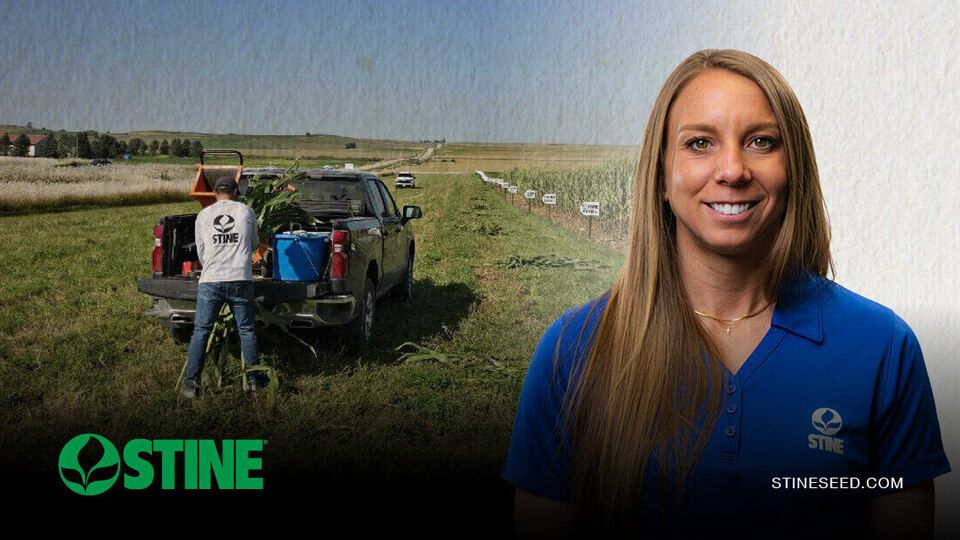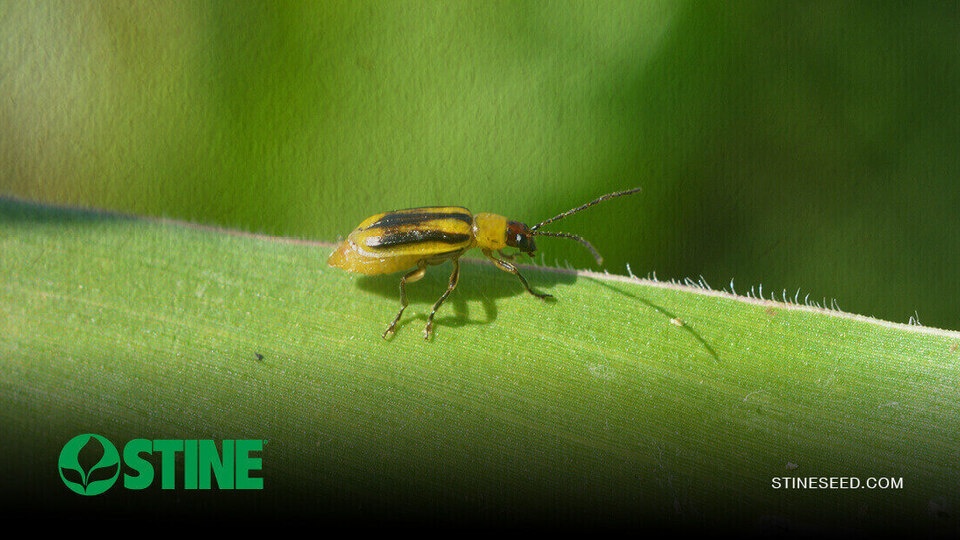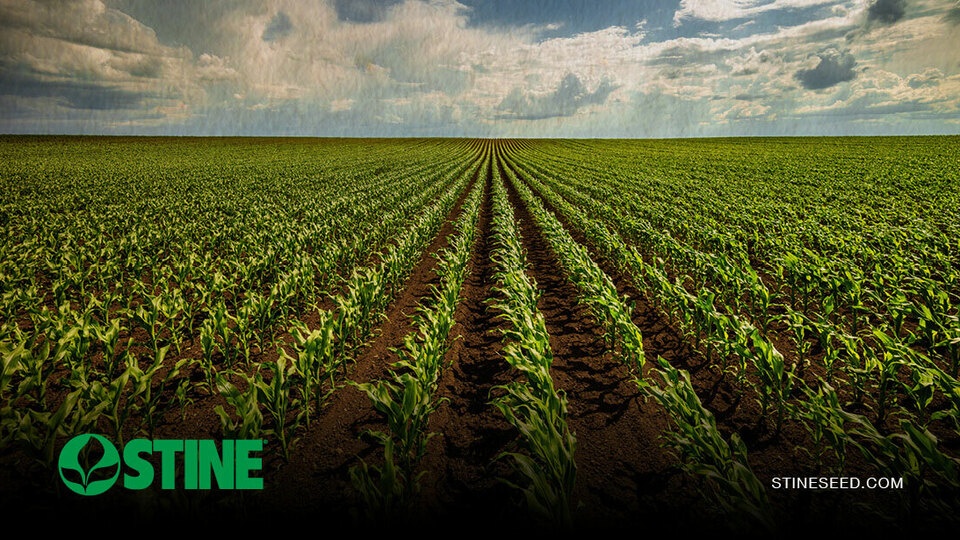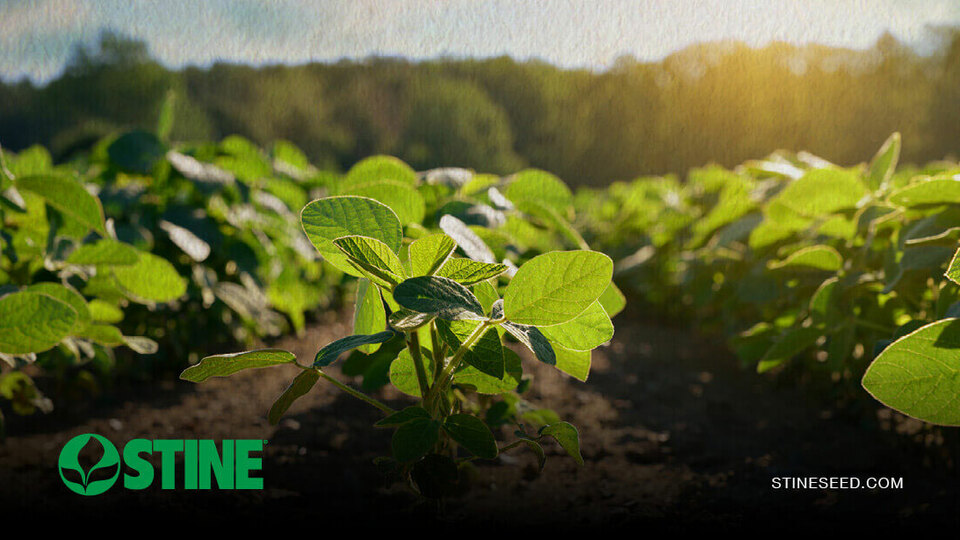This growing season marks the 57th year of yield testing in Stine’s soybean Elite Yield Trials. No other seed company has undertaken the depth and size of a program like this on the soybean side.
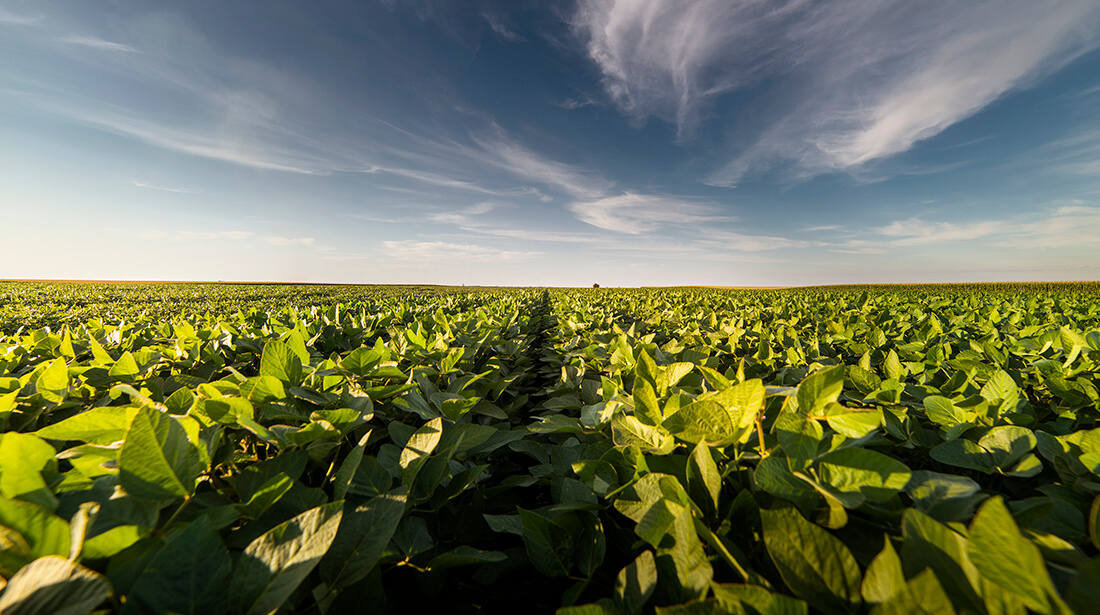
“We plant and collect data from more plots in a given year than any of our competitors,” says Rodney Pentico, Stine's soybean research team leader. “In 2024, we’ll have 1.4 million soybean plots, an increase of 15% from last year, and our pace shows no signs of slowing down.”
The primary goal of Stine’s soybean Elite Yield Trials is to find new high-yielding varieties via tests that include competitor checks at multiple locations and soil types. Our advantage lies in our program’s speed, efficiency, and volume, but its success all hinges on the process that starts on the Stine Seed Farm.
The process
Before a product advances to our Elite Yield Trials, it starts in our nurseries across North and South America, where our team conducts about 20,000 crosses — or hand pollinations — each year.
“The people who do this touch about 250,000 flowers each growing season,” says Tyler DuBay, Stine soybean technical agronomist. “You have a male and a female, and there’s a particular process to cross the two to ensure a successful combination. Patience is a virtue.”
After a cross is made to produce an F1 soybean line, it moves on to the development phase of breeding. This is the stage where products are sent to our off-season production facilities in South America to churn as many generations as possible. Once the generation returns from South America, it’s typically in the F2-F3 stage. Back in the U.S., we then take all the seed and plant it into multiple rows, which is what we call a population. While plants in each population block have the same lineage (parent), they are each unique.
“Just as every child born to the same parents has a different genetic combination, with each cross, soybean genetics recombine in a lot of different ways,” says DuBay. “This is where you start picking out the traits you want and selecting varieties that you want to see more of. Once a variety hits the F3 stage, it’s pretty much fixed and ready to move forward to the Elite Yield Trials.”
Only about 5% of material in the development phase advances to Elite Yield Trials. While our top varieties are undergoing rigorous testing in our trials, we also have our off-season production facilities ramping up production of these products so that we have a good stock of that material before it’s commercialized.
Speed
With each product that advances to the Elite Yield Trial testing phase, we always look to the future production of that product.
“We don’t just prepare for one year at a time,” says DuBay. “With each product, we look 3–4 years down the road. Timing is everything, and the challenge typically lies in off-season production to keep that product moving.”
Fortunately, at Stine, we have the benefit of tapping into our winter nurseries in South America, where we can churn upwards of four generations of soybean varieties a year. At the rate we’re able to increase numbers, it gives us more products to choose from and a leading edge against our competitors.
“I look at it as an upside-down pyramid,” says DuBay. “The winter nurseries allow us to ramp up production of our early generation material, so we have the largest number of products in our program at the top. Then, with each phase of testing, we begin to funnel the best varieties down until you have the highest-yielding options that will be commercialized. These are the products that will really knock your socks off.”
DuBay refers to this process as the development phase, with the goal to get as many cycles as possible. For the process to work, a great deal of planning, patience and scheduling must align.
Efficiency
Stine’s soybean breeding process and Elite Yield Trials are well-oiled machines. The hundreds of individuals who are part of the process understand that timing is key, and getting the work done right only improves the odds of finding the best products for growers’ fields.
“From the crosses we perform at our soybean nursery in Adel, Iowa, to the combine crews responsible for taking out more than a million plots each year, we have everything down to an exact science,” notes DuBay.
For example, we know the South American planting season starts in mid-November, just as we wrap up harvest in the U.S. Our harvest team must be prompt to get the product out of the ground. and Those who ship the seed must understand the challenges of cross-country shipping regulations and timing so that the product can make it to our winter nurseries on time. Then, the harvest season in Brazil and Argentina starts up around Feb. 20 for the earlier maturity products, which are then shipped back to the U.S. for the spring planting season. The processes essentially mirror one another, but the speed and agility of our off-season research — or contra-season production — make it more efficient.
“It all boils down to planning,” says DuBay. “That and talented people who understand the process and precision equipment that allows us to do more in less time.”
The use of drones has dramatically sped up the scouting process for Stine’s research and agronomy teams.
“Drones have revolutionized everything. Before their existence, we would go out with a tablet and walk between every single Elite Yield Trial plot. It would take multiple days, and results would be somewhat subjective as each person may have had a different way of tabulating results. With a drone, it takes around 15-20 minutes per plot and eliminates any personal bias.”
Tyler DuBay, Stine soybean technical agronomist.
We also employ custom planting equipment and specially designed ALMACO R2 Harvesters, which can combine soybean plots in as little as 15 minutes and with a grain tank capacity that allows for more harvest time and less unloading.
“The evolution of technology and predictive analysis will continue to make it easier and faster to test our products,” says DuBay. “As the scope of our Elite Yield Trials increases each year, there’s so much more to explore that will only improve the way we’re doing things and the amount of material we can commercialize.”
Volume
Company founder Harry Stine likes to use a basketball analogy when referring to the volume of our Elite Yield Trials.
“Harry compares it to basketball,” says David Thompson, Stine’s national marketing and sales director. “If you’re going to build a basketball team and you get to pick from a pool of 50 or 1,000, what are the odds that you’ll get a better team from the larger pool? It’s a simple way of thinking about it.”
This is precisely why we go big with our soybean Elite Yield Trials. The 1.4 million plots going in this spring will be spread across 2,200+ acres at 168 different locations in 19 states. Each field can range from 40–80 acres — an extensive logistical effort on our part that requires close attention. Because our Elite Yield Trials are grouped by maturity, we have five different research stations across the U.S. that are responsible for the trials in their region, including Forrest City, Arkansas; Horace, North Dakota; Adel, Iowa; Peoria, Illinois; and Sheridan, Indiana. Our Indiana location, for example, covers down to Kentucky and up to Michigan.
We think big picture in every step of the process — from our initial hand crosses on the Adel soybean nursery to harvest.
Real-world results
With Elite Yield Trials, we want the most realistic scenario we can get, so we plant when farmers plant.
“Getting the trials in the ground when a normal planting season begins is more valuable to the farmer,” says DuBay. “We want them to see what our genetics do in a real-world environment.”
We also have a robust conventional soybean program. We start with a base of high-yielding genetics first, and from there, we begin introducing different traits that are on the market to combat various disease, weed and insect pressures that can occur in any given season.
As for the in-season data we collect from the products in our trials, we look at several different performance factors, the primary being yield.
“Yield is the No. 1 part of the selection process,” says Pentico. “Then, we look at disease characteristics that varieties have. We take maturity on all the varieties for placement in the correct growing region. We do locations in all regions and soil types to get the best data available for the selection process.”
Pentico notes they also have special disease plot locations where they conduct trials at several reps to get the best data for the current growing season.
“Stine is laser-focused on high-yielding products,” says DuBay. “While other companies try integrating several different components into their testing programs, Stine has one objective; to provide yield. We don’t pay attention to all the noise around us; that’s what sets Stine apart.”
To learn more about the value of Stine’s Elite Yield Trials, read the first article in this series here. For a refresher on our corn Elite Yield Trials, visit here. You can also contact your local rep for information on our products and agronomic services.
